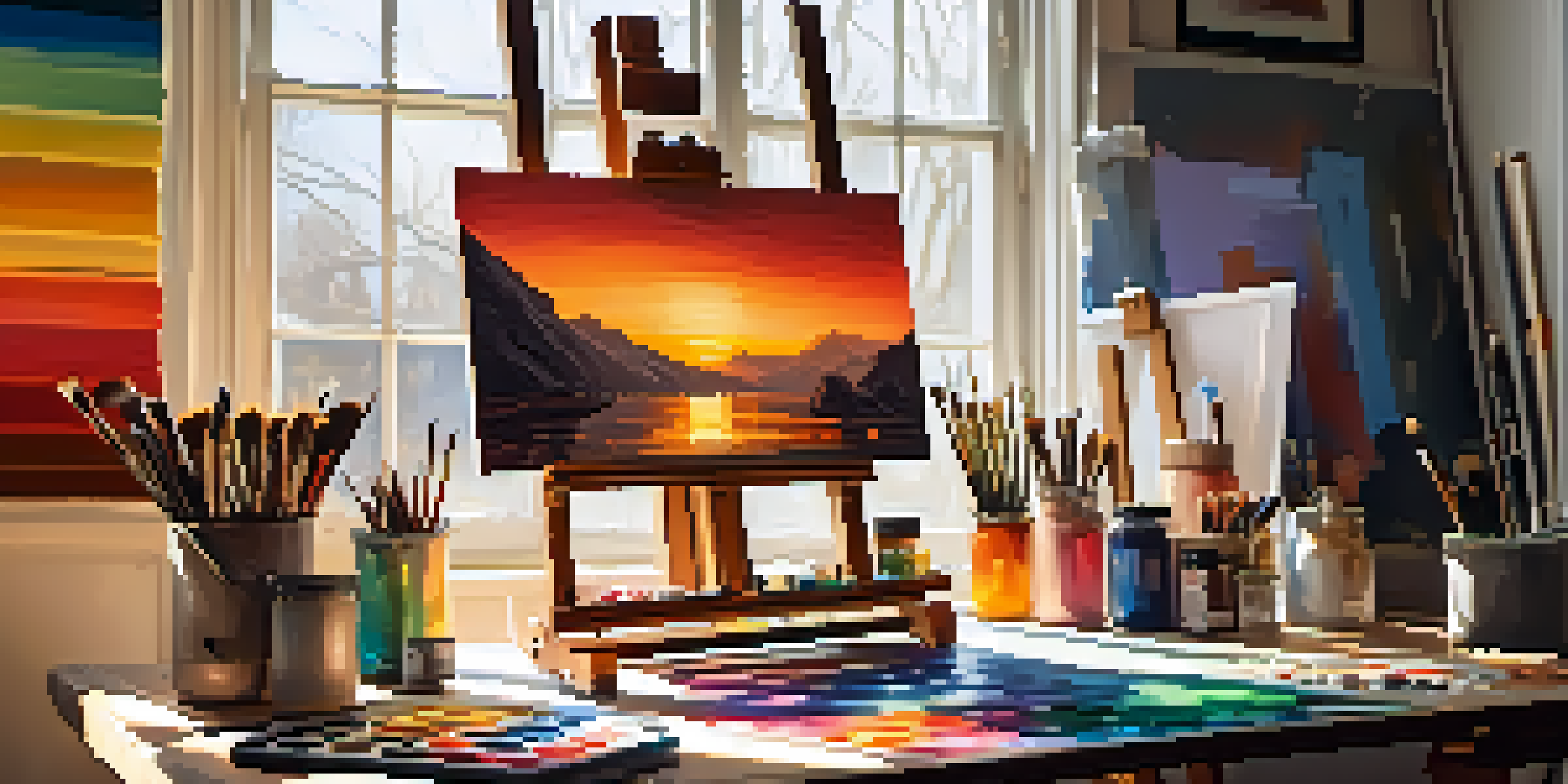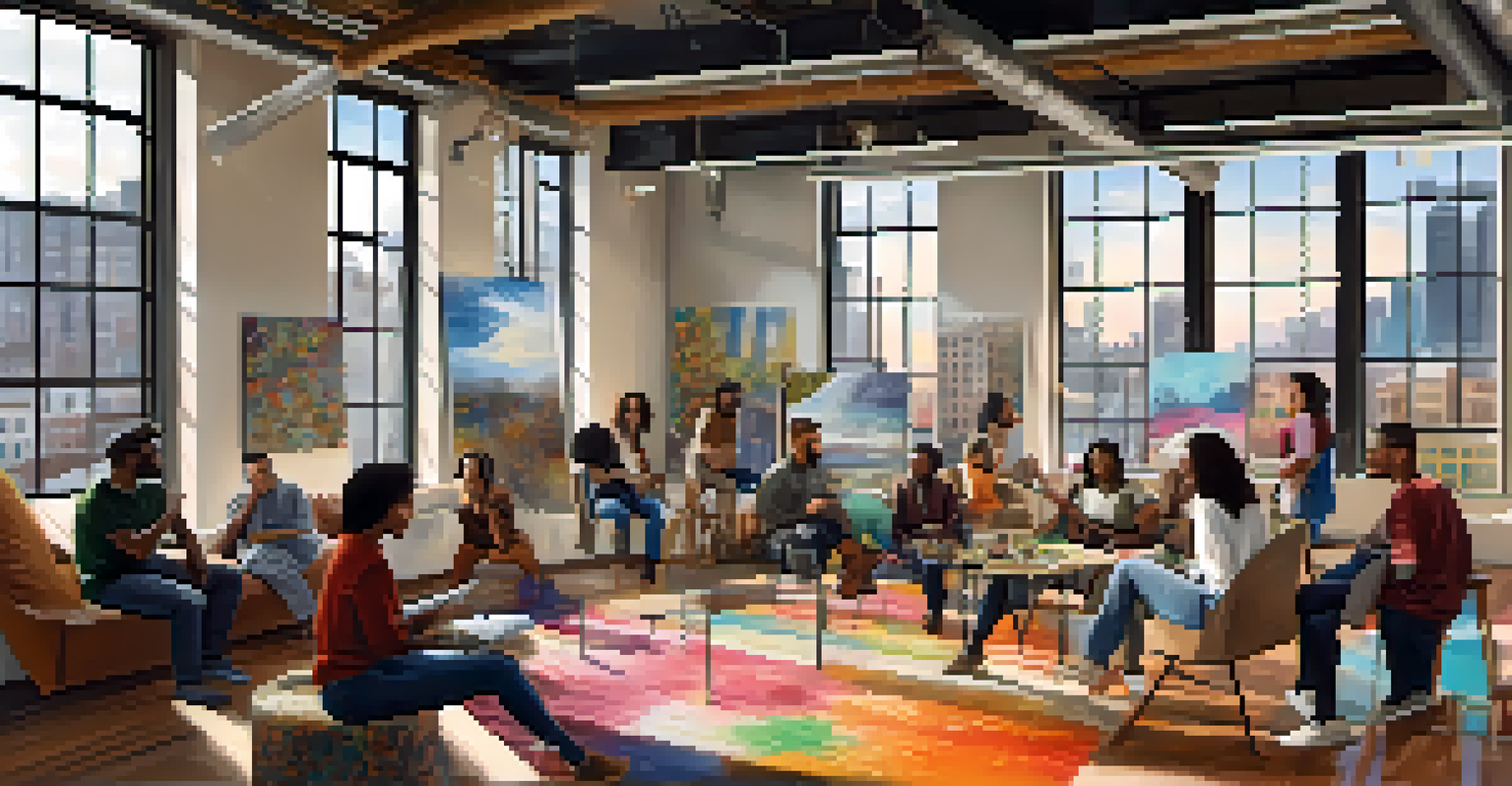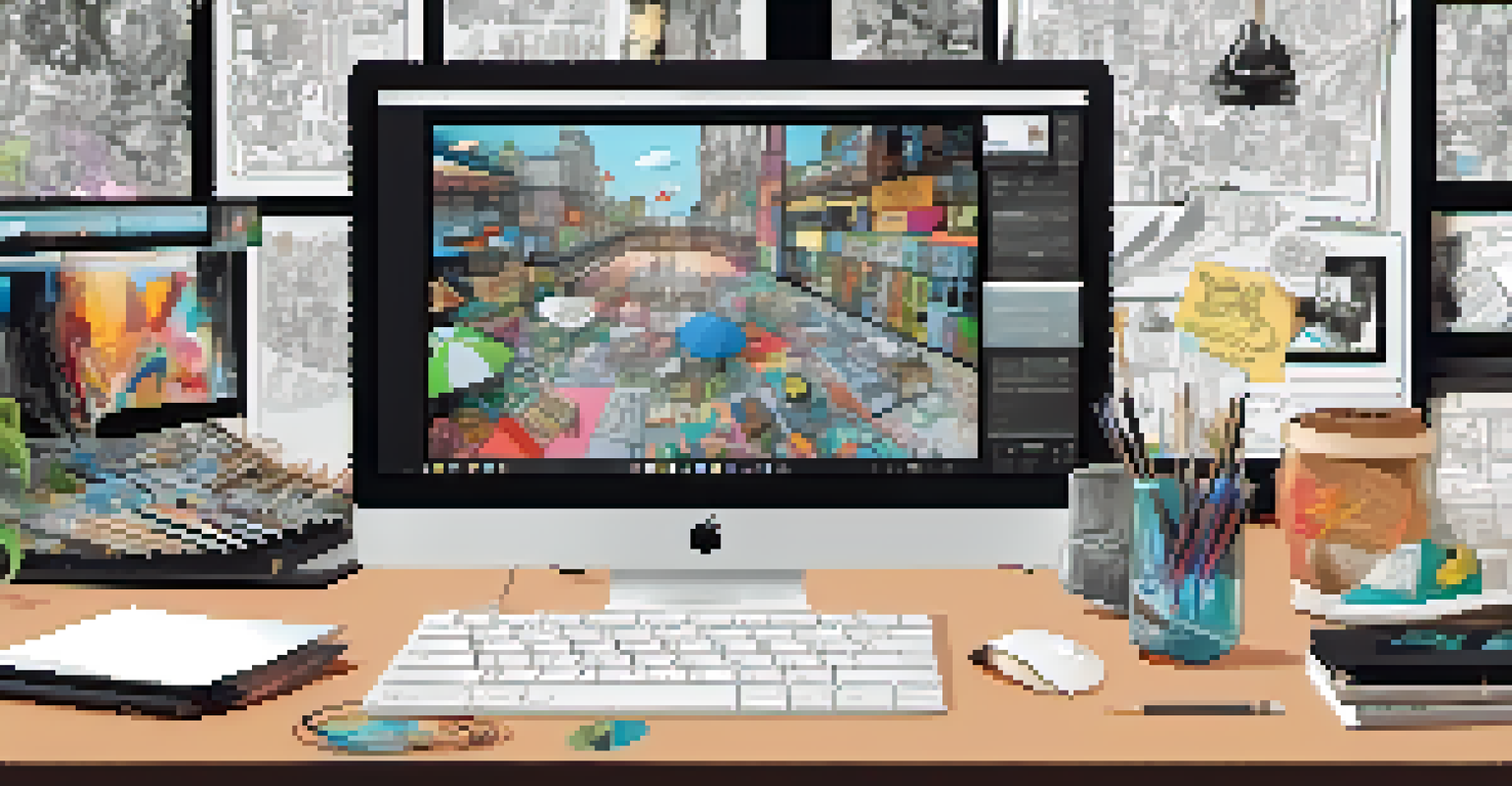Social Media's Influence on Modern Art Movements and Trends

The Rise of Digital Platforms in Art
In recent years, digital platforms have revolutionized how art is shared and consumed. Artists now have the ability to showcase their work to a global audience with just a few clicks, breaking geographical barriers that once limited exposure. Social media platforms like Instagram and TikTok have become virtual galleries, allowing creators to curate their portfolios in real time.
Art is not what you see, but what you make others see.
This democratization of art means that anyone with a smartphone can become an artist or an art critic, leading to a surge in diverse voices and perspectives. For instance, young artists can gain recognition overnight through viral posts, which was nearly impossible in traditional art circles. This shift has also encouraged more experimental and boundary-pushing works, as artists feel empowered to be themselves.
Moreover, the ephemeral nature of content on social media fosters a sense of urgency and immediacy, pushing artists to create more frequently. As they respond to current events or trends, we see a dynamic interplay between art and society, where the two influence each other like never before.
Community Building Among Artists
Social media has transformed the way artists connect and collaborate, fostering a sense of community that transcends physical spaces. Artists can now find likeminded individuals from different corners of the world, enabling collaborations that were once limited to local art scenes. This interconnectedness encourages creative exchanges and idea-sharing, enriching the artistic landscape.

Take the example of collective art projects, where artists from various backgrounds come together to create a single piece or series. These collaborations often reflect shared themes or social issues, amplifying their impact. Through hashtags and social media campaigns, such projects gain traction, drawing attention and support from a wider audience.
Digital Platforms Transform Art
Social media has revolutionized art sharing, allowing artists to showcase their work globally and gain recognition quickly.
Additionally, social media platforms facilitate mentorship opportunities, where seasoned artists can guide emerging talents. This nurturing environment helps foster new generations of artists who are both innovative and socially aware, ensuring that the art world continues to evolve.
The Impact of Viral Trends on Art Creation
Viral trends on social media can significantly influence the type of art being created today. Whether it's a specific aesthetic, challenge, or theme, these trends often push artists to explore new styles or techniques. This phenomenon can be likened to a modern-day art movement, where the masses dictate the direction of creativity.
The artist is nothing without the gift, but the gift is nothing without work.
For example, the rise of digital collages on Instagram led many artists to experiment with mixed media and digital manipulation, often incorporating elements from memes and pop culture. This blending of high and low art creates a unique dialogue about what art can be in the digital age. Artists are now more attuned to the pulse of the internet, using it as a source of inspiration.
However, while trends can drive creativity, they can also lead to homogenization, where many artists replicate popular styles. The challenge lies in balancing trend engagement with authenticity, as true innovation often comes from personal expression rather than conformity.
The Role of Influencers in Art Promotion
Influencers play a pivotal role in promoting art and shaping public perception of artists. With large followings, they can effectively spotlight lesser-known artists, propelling their careers to new heights. This dynamic creates a unique relationship between artists and influencers, where mutual support can lead to increased visibility for both parties.
For instance, when a popular influencer shares a piece of art they love, it can lead to a significant spike in interest and sales for the artist. This symbiotic relationship demonstrates how social media has transformed traditional art marketing strategies. Artists who understand how to navigate this space can leverage influencer partnerships to enhance their reach.
Community and Collaboration Flourish
Artists now connect and collaborate across the globe, fostering a supportive community that enhances creativity and innovation.
However, it's essential for artists to choose influencers whose values align with their own. Authenticity is key; audiences can easily detect inauthentic endorsements, which can backfire. Building genuine relationships with influencers can lead to more meaningful collaborations and lasting impact.
Artistic Authenticity in the Age of Social Media
With the pressure to conform to social media trends, many artists grapple with maintaining their authenticity. The desire for likes, shares, and followers can lead to compromises in artistic integrity. However, artists who stay true to their vision often find a dedicated audience that appreciates their unique voice.
Navigating this landscape requires a balance between engaging with trends and nurturing personal artistic expression. Some artists successfully incorporate current themes without losing their distinct style, creating work that resonates on multiple levels. For example, an artist might use a trending format but infuse it with their cultural influences and narratives.
Ultimately, the challenge lies in embracing the opportunities social media provides while remaining grounded in one’s creative identity. Artists who can strike this balance are often the ones who stand out in a crowded digital space.
The Globalization of Art Through Social Media
Social media has played a crucial role in the globalization of art, allowing cultural exchange and dialogue that enriches the global art community. Artists from different backgrounds can share their stories and perspectives, fostering understanding and appreciation across borders. This interconnectedness has led to the emergence of hybrid art forms that blend various cultural elements.
For instance, artists in one country may draw inspiration from traditional techniques while incorporating contemporary themes from another culture. This blending of styles often results in innovative works that challenge traditional definitions of art. The global art scene becomes a melting pot of ideas, where every contribution is valued.
Navigating Trends and Authenticity
While viral trends can inspire creativity, artists must balance engagement with authenticity to maintain their unique voices.
Moreover, international exhibitions and online art fairs have become more accessible due to social media, allowing artists to showcase their work in front of a global audience. This accessibility not only boosts visibility but also encourages cultural dialogues that can lead to collaborative projects and new artistic movements.
Challenges of Over-Saturation and Critique
While social media offers unparalleled opportunities for artists, it also presents challenges, such as over-saturation and critique. The sheer volume of content can make it difficult for individual artists to stand out, leading to feelings of frustration and inadequacy. This constant comparison can stifle creativity, as artists may feel pressured to conform to popular aesthetics.
Additionally, the immediacy of social media can foster a culture of swift critique, where artists are judged based on a single post. This can be discouraging, especially for those still developing their style or finding their voice. Constructive feedback is essential, but the often harsh reality of online comments can deter artists from sharing their work.

To navigate these challenges, artists are encouraged to focus on their journey rather than external validation. Building a supportive community and cultivating resilience can help them stay motivated and continue creating, regardless of the noise surrounding them.